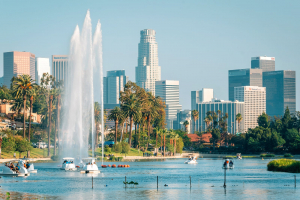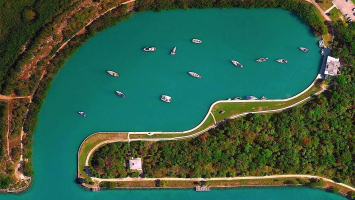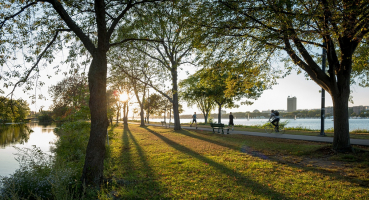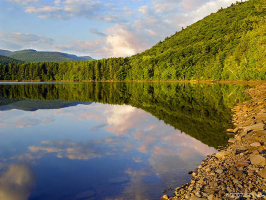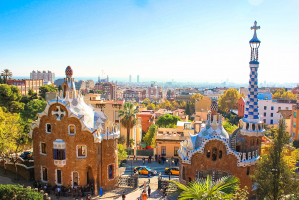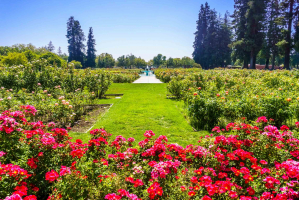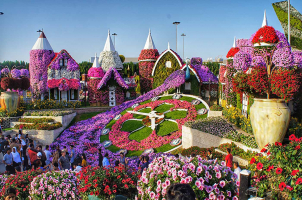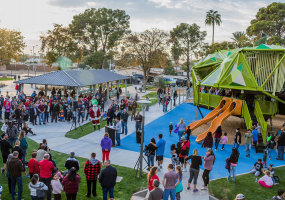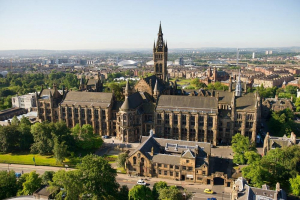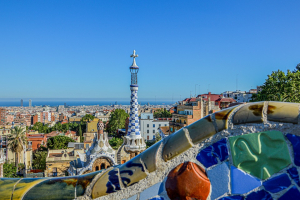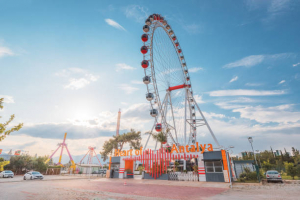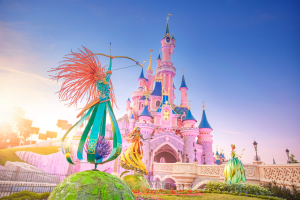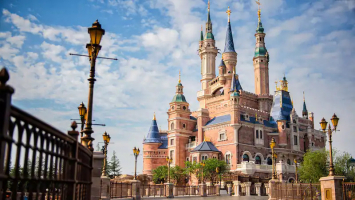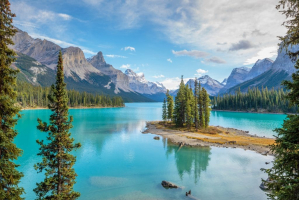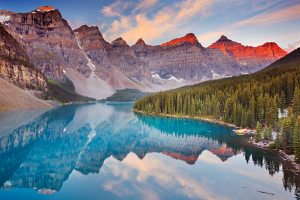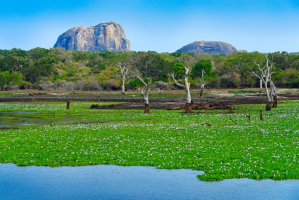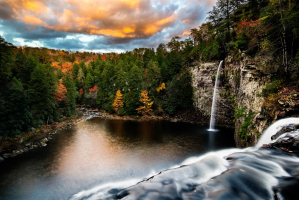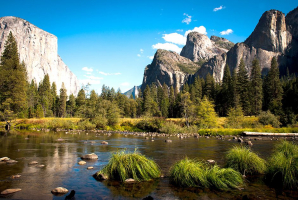Top 5 Best Parks in Glasgow
Glasgow is dubbed "the Sweet Green Town" because the city has over 90 parks and gardens. If you want to take some time out to get some fresh air or discover ... read more...somewhere new not far from the city, you can enjoy a tour of Glasgow's lush parks and gardens. Here is the list of the 5 best gardens and parks in Glasgow that Toplist would like to introduce to readers.
-
On the north bank of the River Clyde in Glasgow's east end lies a park called Glasgow Green. It is the oldest park in the city and was established in the fifteenth century. From its founding, it has been a well-liked green area for both residents and visitors.
The park is home to a number of famous landmarks, including the Nelson Memorial, St. Andrew's Palace, People's Palace, Templeton Mill, McLennan Bridge, Flesher's Haugh, and Tidal Dam.
Green Park was a popular location for political demonstrations throughout the First World War in the early years of the 20th century. In recent times, the venue has also become a favorite for many live music events. One of the most significant events conducted at Glasgow Green each year is the pop & rock festival. The park is now one of 27 locations in Glasgow that are preserved by the Fields in Trust thanks to a formal "Memorandum of Understanding," which is a legacy of the 2014 Commonwealth Games. This agreement is meant to guarantee that the Green will be kept open to the public as a place of recreation for the next generations. In addition to music festivals, the park still hosts athletic activities. The annual Great Scotland Run is usually held in early October and ends in Green with runners running through the historic McLennan Arch.
In short, Glasgow Green:
- is Glasgow's oldest park at 55 hectares (136 acres) on the north bank of the River Clyde.
- coming to the park, you have the opportunity to visit many famous sites such as Nelson Monument, St. Andrew's Palace, People's Palace, Templeton Mill, McLennan Bridge, etc.
- was awarded the Green Flag in 2011 for meeting national park standards and quality green spaces.
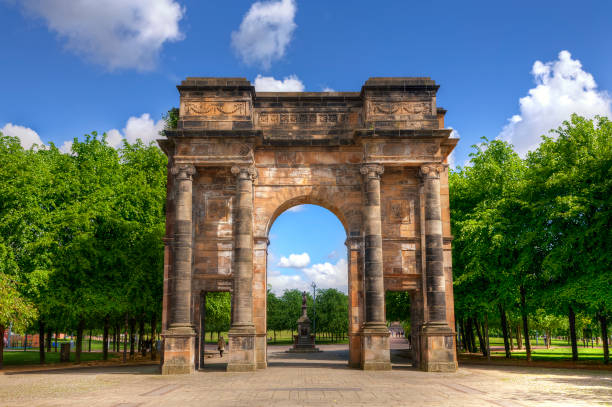
Photo by Phill Thornton on Pixabay Video by A Scottish Odyssey on Youtube -
Kelvingrove Park is a public park of 34 hectares (85 acres) located just before the confluence of the river with the Clyde on the River Kelvin in the West End of Glasgow, Scotland.
Kelvingrove Park was originally built as West End Park in 1852. It was designed in part by Sir Joseph Paxton, chief gardener at Chatsworth House, alongside two principal designers, architect Charles Wilson, and surveyor Thomas Kyle. The park's original purpose was to aid in the city's growth, as well as to give the growing middle class in the west a place to unwind and enjoy themselves.
Today when visiting Kelvingrove Park, visitors can see the stage stands, ice skating rink, bowling and croquet grounds, and various statues and monuments. The largest memorial in the park is the Stewart Memorial Fountain built in memory of Lord Provost Robert Stewart (1851–1854) and his efforts to provide fresh water to the city from Loch Katrine. The fountain was built in 1872 to a design by James Sellars from granite, sandstone, marble, and bronze.
The park is also the site of three major exhibitions including the International Exhibition of 1888, the International Exhibition of 1901, and the Scottish Exhibition of 1911. Large and impressive buildings have been constructed in the park including a large Indian pavilion, which is now the Art Gallery, and a Russian restaurant building to house these International exhibitions.
In a nutshell, Kelvingrove Park:
- a 34-hectare (85-acre) public park located in the West End of Glasgow, Scotland.
- was originally built as West End Park in 1852.
- designed by Sir Joseph Paxton, architect Charles Wilson and surveyor Thomas Kyle.
- the largest memorial in the park is the Stewart Memorial Fountain.
- the park is also home to three major international exhibitions.
Video by Kapampangan in Scotland on Youtube Video by Planet. on Youtube -
Victoria Park, a 20-hectare (50-acre) park that borders the counties of Scotstoun, Whiteinch, Jordanhill, and Broomhill, is situated west of Glasgow, Scotland.
The park was established and named after Queen Victoria's celebration in 1887. The arboretum area of the park was initially intended as a teaching space. However, for the construction of the Clyde Highway and the Tunnel's access roads, a sizable amount of the park was destroyed in the 1960s.
In Victoria Park, there is a memorial honoring local residents who died during World War I and World War II. In 1887, Lady Partick provided the funding and oversaw the construction of the Jubilee Gate at the entrance of Victoria Park North Drive. It was produced for about £100 by Macfarlane's Saracen Foundry.
Victoria Park is now home to a number of events such as the Whiteinch Fair Festival and the Indian Summer music festival. The park is also home to rugby club Victoria Cricke, Hyndland RFC, and Glasgow Centurions, as well as Scottish football clubs including the Glasgow Sharks and Glasgow Magpies. They are dubbed the UK's only dedicated football fields. Besides, during the summer, Countryside Rangers often arrange walks at the park to educate children about protecting the environment. In addition, the park also organizes a 5km park run every Saturday and a 2km park run for teenagers every Sunday.
In sum, Victoria Park:
- A 20-hectare (50-acre) park located west of Glasgow, Scotland.
- The park was established and named after Queen Victoria's celebration in 1887.
- In Victoria Park, there is a memorial honoring local residents who died during World War I and World War II.
- Victoria Park is currently host to a number of events such as the Whiteinch Fair Festival and the Indian Summer music festival.
- The park is also home to the rugby club as well as football clubs
- Besides, the park also organizes a park run every Saturday and Sunday.
Video by Wee Walks on Youtube Video by Glasgow urban wildlife on Youtube -
Queen's Park is a park located south of Glasgow, Scotland with an area of 60 hectares (148 acres). It is located about 4 km south of the city center. Queen's Park, which was formerly known as "South Side Park," is now named in honor of Mary, Queen of Scots, who lost her life there at the Battle of Langside. The name Queen's Park is used to name a nearby station, as well as a number of other local businesses and organizations, including the famous football team, Queen's Park FC.
The park was constructed in the late 19th century to satisfy the expanding middle-class housing demand brought on by the building of apartment complexes and the growing population density of Glasgow in general and the South Side in particular. The park was designed by architect Sir Joseph Paxton, who was also responsible for the construction of the famous public parks in London, Liverpool, Birkenhead, and the grounds of the Spa Building in Scarborough. Originally, construction plans for the park included a winter garden and an artificial lake, but these were deemed too lavish and were scrapped in architect John Carrick's plans.
Queen's Park is still a popular destination for Glasgow's South Side residents today and is utilized yearly. The park often offers farmers' markets and a variety of activities geared toward families, many of which are held at the renovated grandstand now known as the Queen's Park Arena. There are other sports and recreation grounds and amenities in the park as well. These activities are free every week and start at the park on Saturday mornings at 9:30.
Visitors can enjoy a panoramic view of Glasgow in a certain direction from various points of the park. Among them, the best viewpoint is marked by a flagpole with a view of tens of miles to the north, east, and south of the city.
To conclude, Queen's Park:
- A park located south of Glasgow, Scotland with an area of 60 hectares (148 acres) to be in honor of Mary, Queen of Scotland.
- The park was built in the late 19th century to meet the housing needs of the growing middle class and was designed by architect Sir Joseph Paxton
- Queen's Park remains a popular destination for its markets and variety of family, sports, and entertainment activities.
Video by John Donnelly on Youtube Video by Scottish parkruns on Youtube -
Pollok Country Park is a 146-hectare (361-acre) national park located in Glasgow, Scotland. It is Glasgow's only and largest national park with extensive forests and gardens providing a tranquil nature reserve for both visitors and wildlife.
This rural historic park was formerly part of the Old Pollok Estate, home to the Maxwell family for over 700 years. In 1966, Anne Maxwell Macdonald donated the land to estates, including Pollok House, to the Glasgow Corporation under the proviso that it remained a public park. The park also has a purpose-built building to house the large, eclectic collection of art and antiques by shipping magnate William Burrell, who dedicated the Burrell Collection to the City of Glasgow after he died.
In 2007, after beating competition from parks in Italy, France, Germany, Poland, and Sweden, Pollok Country Park was named Britain's Best Park. It then went on to be named Europe's Best Park in 2009. Pollok Country Park is the only park that has successfully maintained its annual Blue Flag Award in 2016 since its first win in 2012. The Blue Flag Award is the national benchmark for parks and quality green space. Even so, the park is thought to have been underutilized with plans outlined to encourage more visitors in 2019.
In short, Pollok Country Park:
- Pollok Country Park is Glasgow's only and largest national park with 146 hectares (361 acres), located in Glasgow, Scotland.
- This rural historic park was formerly part of the Old Pollok Estate, home to the Maxwell family for over 700 years.
- In 2007, Pollok Country Park was named Britain's Best Park, and Europe's Best Park in 2009.
- It successfully maintained the Blue Flag Award from 2012 to 2016 for its quality park and green space standards.
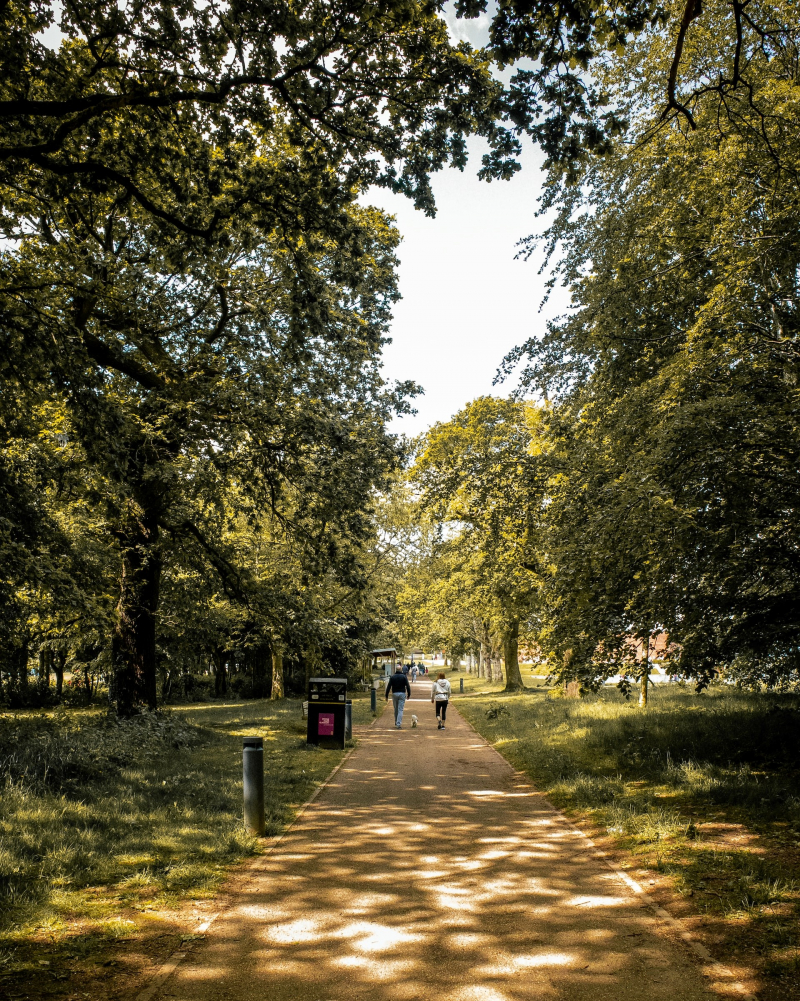
Photo by Vishnu Prasad on Unsplash Video by Nature on Youtube







